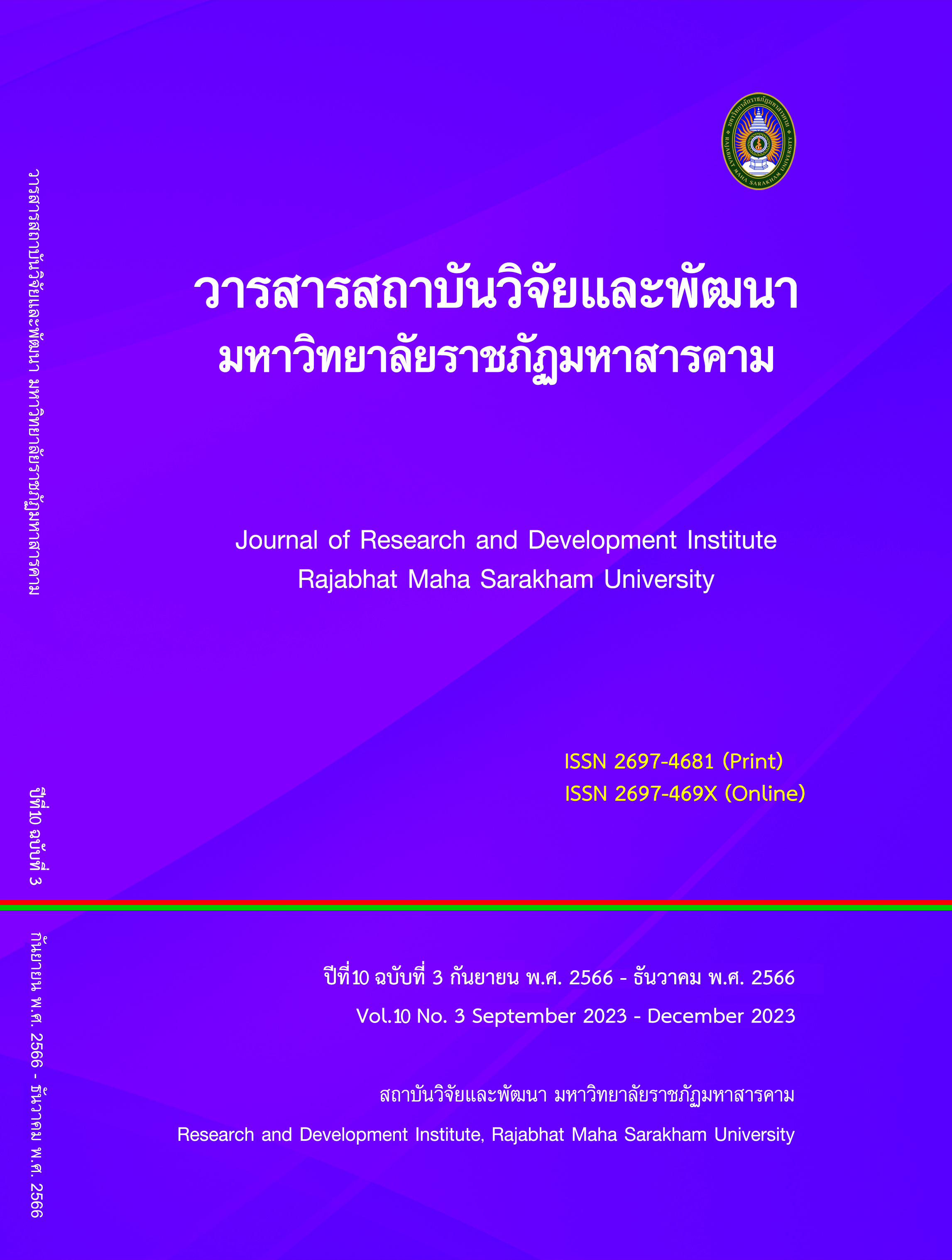Relationship Between Academic Administration and Effectiveness of schools in the Chonburi 2 School Cluster under the Chonburi Rayong Secondary Educational Service Area Office
Keywords:
Academic Administration, Effectiveness of schoolsAbstract
The objectives of this research were to study: 1) academic administration of the school, 2) school effectiveness, and 3) relationship between academic administration and effectiveness of schools in the Chonburi 2 School Cluster under the Chonburi Rayong Secondary Educational Service Area Office. A sample of 217 was randomly selected from teachers at these schools. The tool was a questionnaire. The statistics used in the analysis were frequency, percentage, mean, standard deviation. and Pearson's correlation coefficient. The results were as follows.
- Academic administration of these schools was rated on overall and on individual aspects at the high level. Those aspects were ranked from the top as that of assessment and evaluation, of educational supervision, of development and usage of educational technology media, curriculum development, and guidance.
- The overall effectiveness of these schools was also rated the high level. However, two aspects, that of ability to produce high-achieving students and of ability to adapt and develop to suit the environment, were rated at the very high level, while the other two of ability to solve school internal problems, and of ability to develop students to have a positive attitude, rated at the high level only.
- Academic administration had a very high positive correlation with the effectiveness of schools in the Chonburi 2 School Cluster under the Chonburi Rayong Secondary Educational Service Area Office (r=0.879). It was statistically significant at the 0.05 level.
References
Bhiraban, T. (2018). The relationship between academic administration and the effectiveness of basic educational institutions. Under the jurisdiction of the area office Chiang Rai Primary Education, Area 1. University of Phayao : Phayao.
Cronbach, L.J. (1990). Essentials of psychological testing. (5th ed). New York: Harper & Row.
Hoy, W. K. & Miskel, C.G. (2001). Educational administration: Theory, research, and practice. (6thed). Boston: McGraw – Hall.
Jongrak, N. (2011). The relationship between the communication style of subject group heads and the effectiveness of schools under Pattaya City. Bang Lamung District Chonburi Province. Burapha University : Chonburi.
Krejcie, R. V. & Morgan, D. W. (1970). Determining Sample Size for Research Activities. Educational and Psychological Measurement, 30(3)
Office of the Basic Education Commission. (2017). Policy of the Office of the Commission. Basic education, fiscal year 2017. [Online]. http://www.petburi.go.th/web/attachments/article/765/%E0%B8%99%E0%B9%82%E0%B8%A2%E0%B8%9A%E0%B8%B2 %E0%B8%A2%20%E0%B8%AA%E0%B8%9 E%E0%B8%9060.pdf. [28 March 2022]
Office of the Basic Education Commission. (2019). Policy of the Office of the Commission. Basic education, fiscal year 2019. [Online]. https://www.obec.go.th/wp-content/uploads/2018/10/OBECPolicy62.pdf [28 March 2022].
Pathakamin, D. (2017). The relationship between academic administration and the effectiveness of educational institutions in Sanam Chai District, an area under the Chachoengsao Primary Educational Service Area Office, Area 2. Burapha University: Chonburi.
Prukratok, S. (2017). The relationship between academic administration and the effectiveness of the school expanding educational opportunities, Mueang District, Rayong Primary Educational Service Area Office, Area 1. Burapha University : Chonburi.
Wongnutaroj, P. (2010). Academic administration. Bangkok : Bangkok Supplementary Media Center.
Yodmalee, K. (2015). The relationship between teachers' work motivation and the effectiveness of schools under the Chanthaburi Primary Educational Service Area Office, Area 1. Burapha University: Chonburi.
Downloads
Published
How to Cite
Issue
Section
License
Copyright (c) 2023 นภาพร วงค์เนียม, สมชาย เทพแสง, สนั่น ประจงจิตร

This work is licensed under a Creative Commons Attribution-NonCommercial-NoDerivatives 4.0 International License.
Articles that are published are copyrighted by the authors of the articles






